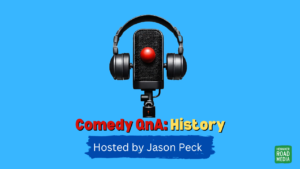This is a follow-up to my recent post about my M.C.-ing job. Unfortunately, even though I’d heard that the show was pretty much a sell-out, most of the audience didn’t turn up. However, I still opened the show with the energy and professionalism as if there were 750 people.
What I’d forgotten about were the bright lights that come with performing on a theatre stage, D’oh. But luckily my sense memory of having performed under such conditions in the past kicked in and I didn’t let it throw me. As a result when I opened the show there could’ve been more people than there actually were, but I couldn’t quite see. So that why I performed as if there were more people.
You can’t let something like that throw you. If you have the opportunity, like I did, get on the stage and “make friends with it”. By that I mean get on the stage, or speaking platform, walk around and get used to the space. Look out at where the audience will be seated and get familiar with looking at the seats and delivering your message.
Try to work out where the best place for you to stand is. If you’re using a microphone, like I was, ask the technician how close you can get to the speakers before you get feedback.
The difficulty was that a lot of people bought tickets which were assigned to specific seats. As a result most of the audience didn’t turn up so we played to many empty seats. I tried to encourage the organisers to encourage the audience to sit together. But unfortunately the theatre ushers insisted that the audience members who turned up sat in the seats they had purchased. Hence there were clumps of audience members spread throughout the auditorium.
Some Tips for Big Crowds
Fellow speaker Jeremy Jacobs commented on my previous post that using the “Z” techniques of looking at an audience the best for a large crowd. However, whilst this may be best for delivering a speech, I felt that this wouldn’t completely work in an M.C. role. As an M.C. one has to try make contact with the different area of the crowd.
Brazillian clown Angela deCastro once said to me that she looks for people wearing glasses in the audience. This makes her actively engage and connect with the crowd. She said that she also tries to smile with her eyes. Which sounds like a neat trick if you can pull it off.
As another fellow speaker Jonathan Steele said in his comment on my last post: “the way to tap into this is not just looking at the audience, it is looking at the individual people” I think he’s absolutely right in that regard.
The audience did ebb and flow. In the beginning they were quite receptive, then when the audience grew (with teenage school girls) they became quite raucous and then, after they left, they audience calmed down somewhat.
Perform bits of your act to one section at the expense of another. Then you can switch and perform to the one you previously ignored. It’s more about making sure each audience member, or each section of the audience, gets equal amounts of your performance.
Jeremy also suggested that I don’t make jokes, however I had been hired as a humorous M.C. and I feel that M.C.s in general should be entertaining and funny in order to help get the crowd warmed up and engaged. I think that this is appropriate for being a Toastmaster, but not an M.C. As a Toastmaster you don’t want to get too fixated on being funny, you want to keep the meeting going along at a certain pace and not get too wrapped up in being funny.




2 comments
1 pings
Oh Dear, why didn’t they turn up? Hope you got paid all the same.
Author
I don’t know why they didn’t turn up. There could be many reasons. Sometimes people make agreements in life and don’t always follow through. Maybe that’s what it is? And yes, I did get paid…
[…] Public Speaking: Playing a Large Audience, part 2 This is a follow-up to my recent post about my M.C.-ing job. […]